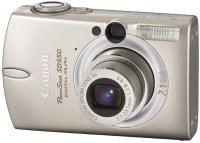CoreDuoTemp
You can use an application called CoreDuoTemp to monitor your Intel-Mac's processor speed and temperature. My Macbook Pro measures up thusly:

Every culture has a burrito.
You can use an application called CoreDuoTemp to monitor your Intel-Mac's processor speed and temperature. My Macbook Pro measures up thusly:

I took my 17" powerbook to the local Apple Store, where they let me test a new battery before buying it. I wanted to see if the battery (replaceable) was dead, or if the charging circuitry (not replaceable) was dead; thankfully, it turns out it was the battery. I bought the tester battery (new, but returned because it was the "wrong size" -- it pays to read the labelling, people!) at a $50 discount. Not bad -- free help at the Genius Bar plus a discount on a new battery. My wife has the laptop now, and just loves it. It's an upgrade from her G3 iBook. It is, in her words, "lighter, faster, bigger!"
I've been following the Something Awful thread on thermal grease and the Macbook Pro CPU temperatures. I installed the speedit kernel extension and Temperature Monitor, which reads the data from the kext and graphs it.

 I have a Canon "digital elph" model SD550 digital camera. I had it in my pocket when I rode the SheiKra roller-coaster at Busch Gardens in Tampa. The ride cracked the LCD display on the back of the camera, making it more or less impossible to change any of the settings, review pictures, etc. Luckily, I hadn't put it in any wierd sepia/black and white type of mode, and could continue taking pictures using the optical viewfinder.
I have a Canon "digital elph" model SD550 digital camera. I had it in my pocket when I rode the SheiKra roller-coaster at Busch Gardens in Tampa. The ride cracked the LCD display on the back of the camera, making it more or less impossible to change any of the settings, review pictures, etc. Luckily, I hadn't put it in any wierd sepia/black and white type of mode, and could continue taking pictures using the optical viewfinder.